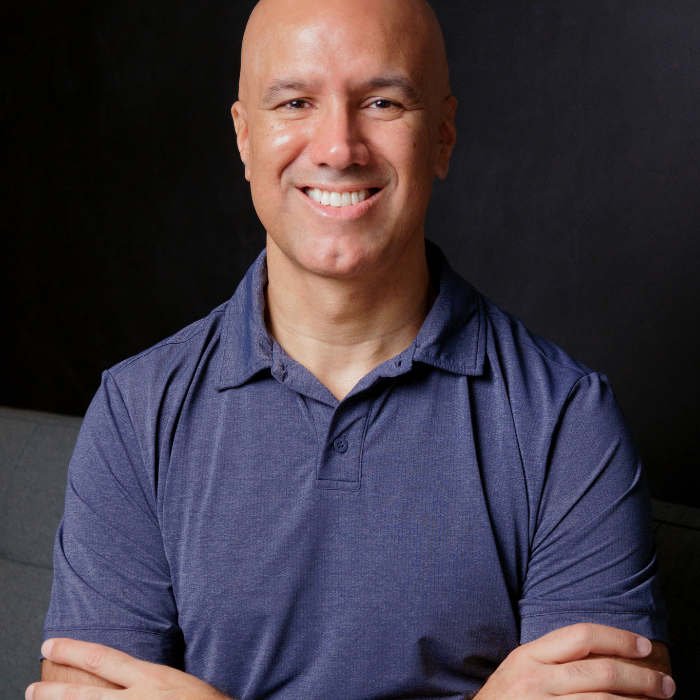The first big challenge a startup faces in its existential journey is to prove that the big, hairy and audacious dream is worth the years of Herculean effort that entrepreneurs will need to undertake in order to reach their goals.
In an existing market, where a large number of potential consumers want and can buy a product, the team must minimally prove their solution is better than the existing alternatives and that, consequently, it has the potential to defeat established competitors.
However, in a new market, where there is a tendency for a large number of potential consumers to want and to be able to buy a product, the team must minimally prove that its solution is capable of catalyzing the potential for the formation of a large market.
Achieving Product-Market Fit (“PMF”) is the object of every entrepreneurial team starting out on its journey, as well as its angel investors, accelerators and incubators. PMF is what defines the transition from OS1/Family to OS2/Tribe (In case you don't know what we're talking about, see the growth stages of a startup). And, ultimately, it marks the moment when venture capital funds like Astella can begin to be a part of the company's journey.
What is Product-Market Fit?
Founder and CEO of VividCortex, Baron Schwartz further dissects PMF, offering an interesting description to define product, market and fit:
- Product: many people think that product is what our company develops or sells (software, a website, an app, a physical product). In fact, a product is what our company sells, or rather, the result obtained by our clients when they use our product. It's the good feeling you get putting on a new outfit, when you're productive using a certain software or laughing with friends when communicating on a messaging app;
- Market: erroneously thought of as a large group of people who use the product, in fact the market is a large group of people who buy and pay for the product. Oftentimes, the two are one and the same, but not necessarily. We users aren't the ones who pay for the social networks, the advertisers are;
- Fit: Perhaps the most ethereal part of the equation, a fit occurs when the supply distribution mechanism aligns with the purchase and consumption mechanics of the market.
PMF is therefore when these three elements are designed and aligned. In The only thing that matters, founder of Netscape and A16Z Marc Andreessen explains that it's easy to see when we don't achieve product-market fit: customers aren't using the product much, word-of-mouth is not very strong, the cycle of sales is awkward and unpredictable and news about the product is tepid or non-existent. At the same time, it is also very easy to notice when we do achieve it: customers line up to buy the product, using it almost like toothpaste, and the press is calling nonstop, as they become curious about the sales success.
Far from being black and white, PMF is surrounded by an often-disturbing mystique. Co-founder of A16z (A Dozen Lessons About Product/Market Fit), Ben Horowitz lists the main myths that cloud the understanding of PMF:
- Myth #1: PMF is a distinct, palpable and identifiable event;
- Myth #2: It's perfectly obvious when we get to PMF;
- Myth #3: Once achieved, there is no way to lose PMF;
- Myth #4: Once you achieve PMF, you no longer need to worry about competitors.
In attempt to make this mission more tangible, William Mougayar (Product-market-fit is a continuum) offers an interesting qualitative checklist for maturity of a startup's main activities before and after PMF:

From a quantitative point of view, the current market expectation for the traction (revenue or users) required for proof of PMF varies according to the business model:

How to achieve product-market fit
Once the objective of the first stage has been defined qualitatively and quantitatively, it is worth considering how to develop a travel plan. If we were to create a project whose goal is to achieve PMF, we could divide it into two stages: product-solution-fit (PSF) and solution-distribution-fit (SDF).
Preetish Panda of Openview defines product-solution-fit as the validation of how the original idea, which motivated the beginning of the journey, is really a problem for a group of potential customers; and that it is viable to build a solution capable of addressing said opportunity in an unequivocal manner. It is a moment to validate the value proposition, identifying the features that must be combined to make the solution attractive.
The best tactic for proving PSF is to follow Paul Graham's advice/methods in: Do Things That Don't Scale and Steve Blank in Appendix B of The Four Steps to the Epiphany.
Clement Vouillon, also of Openview, describes solution-distribution-fit as the process of discovering and learning how customers buy the type of product we are developing; what the possible points of contact are along the journey of product consideration and evaluation, so we can architect the most appropriate marketing channels and sales model.
As for SDF, although written for software-as-a-service companies (SaaS), Building a Sales & Marketing Machine by David Skok is the best workflow we've found so far for mapping, testing and conquering this step in any business model (eCommerce, marketplaces and audience).
Both stages require a capacity for intense experimentation. Chance undoubtedly plays an important role in this quest, but the process for finding this chance is extremely consistent. This is perhaps the most important role that angels and accelerators can play in supporting their entrepreneurs at this stage: helping the entrepreneur to be a professional experimenter.
There are four interrelated factors that must be taken into account in this search: experience, money, time and timing.
The greater the experience of entrepreneurs in the type of problem being addressed by the product and in the techniques necessary to produce it, the less time and amount of money needed to achieve PMF.
The greater the need to develop basic technologies — scientific advancement commonly known as deep tech— the greater the need for money and time to achieve PMF.
Timing is the wildcard in this equation. When it plays in your favor (the market is ready and thirsty), everything happens in less time and requires less money. When it plays against you (the market is not yet ready), there is no amount of money to make the vector change direction. All you can do is wait for time to pass.
The skills needed to maximize the chance of success at this stage are countless. Either teams start out with these tools, or they have to learn as quickly as possible. We believe that the most relevant skills are:

As an investor, it is reasonably comfortable to judge whether or not a startup has achieved PMF.
As an entrepreneur, the task is much more complex. In our case, it took practically nine years to (almost) achieve our PMF. It took us a long time to learn that a venture capital fund is actually a marketplace (a two-sided market) and, as such, it needs to attract both entrepreneurs and investors.
In our first fund (Journey I), we started with our own resources and developed our value proposition for entrepreneurs: implementing the 5 machines — Sales, Product, Customer Success, Talents and Operating System. This is how we built the product-solution-fit (PSF) and the solution-distribution-fit (SDF) for one side of the marketplace.
In our second fund (Journey II), we were lucky to win over some investors and we learned that the product-solution-fit for this audience would have to be much more than the 31%-plus return we got from our first fund.
As we move towards our third fund (Journey III) we are learning how to build the solution-distribution-fit for this side of the marketplace and thus conquer our PMF. We continue to strive to become scalable, sustainable and admirable in our new fund.
**Other references: Design Sprint; The Mythical Man-Month; Customer Journey; How to Build a Growth Machine; Get Sht Done; Team building checklist; The New Science of Building Great Teams; Value Creation; Value Capture; OKRs.












